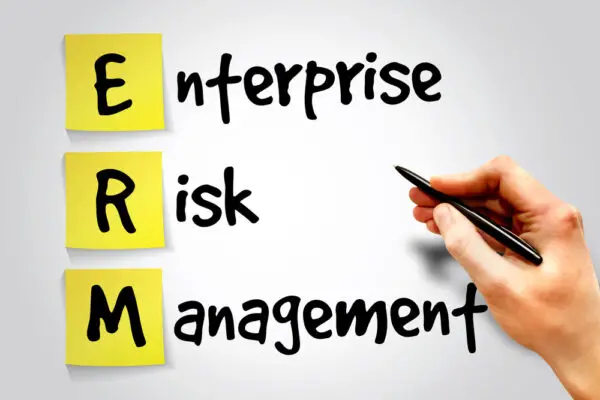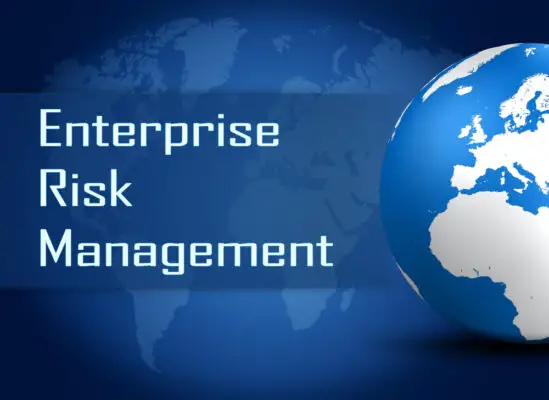Strategic risks are risks that can impact an organization’s ability to achieve its objectives. These risks can come from a variety of sources, including changes in the marketplace, new technologies, and shifts in customer behaviour. While some strategic risks are out of an organization’s control, there are steps that can be taken to mitigate their impact.
There are many different types of strategic risks that businesses can face. Some common examples include competitive risks (e.g., a new competitor entering the market), technological risks (e.g., obsolescence of a key product or service), and economic risks (e.g., a recession). Regulatory risk and their levels of key economic risk indicators.
Strategic/operational risk management is a broad enterprise risk management initiative (ERM). Likewise, it covers financial reputation management and compliance risks. ERM is an integrated approach that combines organisations’ reputational risk and compliance perspectives with business units and functional groups.
It requires firmwide visibility and management decisions – decisions that may not fit individual businesses but do fit broader organizations. Therefore, organizations utilizing ERM have improved their risk management skills so they know when and where to take measures against risks.
Strategic risks can affect different business areas, such as business strategy failures, changes in market conditions, and technological advances. Examples of strategic risks include failure to anticipate customer needs, inability to keep up with competitors, and failure to recognize new opportunities.
Organizations should manage strategic risk by setting clear objectives and goals, monitoring the external environment for changes in economic capital market conditions, and developing flexible strategies to respond quickly to changes. Additionally, organizations with change risks should ensure they have sufficient resources available to implement their strategies effectively.
The key to remember is that strategic risks can come from internal and external sources. This means that they can be difficult to anticipate and plan for. That’s why it’s so important to have a strong risk management framework in place.
In this blog post, we’ll explore strategic risks, provide some examples, and discuss a framework for managing them. By the end of this post, you should understand how to identify and manage strategic risks within your organization.

What Are Strategic Risks?
Strategic risks are those that can impact an organization’s ability to achieve its objectives. These risks can come from a variety of sources, including changes in the marketplace, new technologies, and shifts in customer behaviour.
Some common strategic risk examples include:
-Marketplace risk:
This is the risk that changes in the marketplace will adversely impact an organization’s ability to compete. For example, the introduction of a new competitor or a change in customer tastes could put pressure on an organization’s market share.
-Technology risk:
This is the risk that new technologies will render an organization’s products or services obsolete. For example, the advent of streaming services has had a major impact on the traditional television industry.
-Customer risk:
This is the risk that changes in customer behaviour will adversely impact an organization’s sales or profitability. For example, if customers begin buying less of a particular product or service, it could have a negative effect on an organization’s bottom line.
The key is to identify these risks early and put processes in place to mitigate their financial risk impact.
What is a Risk Management Framework?
A risk management framework is a tool that businesses can use to identify, assess, and manage strategic risks. There are many different ways to build a risk analysis and management framework, but all of them share some common elements.
First, through senior management, businesses need to identify the types of strategic risks they face. As we mentioned before, businesses can encounter many different types of risks, so this step is crucial. Once the types of risks have been identified, businesses need to assess the likelihood and potential impact of each one. This will help them prioritize which risks need to be addressed first.
Finally, businesses need to put together a plan for how they will manage each risk. This might involve insurance, hedging, or some other type of risk mitigation or strategy. The key thing is to make sure that the plan is well-documented and communicated to all relevant parties.
How To Manage Strategic Risks
There is no one-size-fits-all solution for managing strategic risks; the best approach will vary from organization to organization depending on factors such as size, industry, and geographic location. However, there are some best practices that all organizations should follow when it comes to managing these types of risks.
One approach is to develop a strategic risk management framework. This framework should include four key elements of the strategic risk management process:
-Identification:
The first step is to identify which risks could negatively impact your organization’s ability to achieve its objectives. This can be done through methods such as brainstorming sessions with senior leaders or conducting surveys of employees across different departments.
-Assessment:
Once you’ve identified which risks pose a threat to your organization, it’s time to assess their potential impact. This can be done by quantifying the costs associated with each risk and estimating the likelihood of each one occurring.
-Mitigation:
After identifying and assessing the risks facing your organization, it’s time to develop mitigation strategies. These strategies should aim to reduce the likelihood of each risk occurring or minimize its potential impact if it does occur.
-Monitoring and Reporting:
The final step is to put processes in place to monitor for signs that a particular risk is beginning to materialize and report any findings back to senior leaders on a regular basis. This will allow you to take swift action if necessary and avoid any negative surprises down the road.
Strategic Risk Management
Strategic risk management is a critical business discipline that helps organizations achieve their goals by identifying and mitigating risks. It involves recognizing potential risks, assessing their effects, and taking the necessary steps to reduce or eliminate them.
Strategic risk management can help organizations identify opportunities for growth, manage risks, and protect themselves from potential losses.
The strategic risk assessment process should be tailored to an organization’s specific needs and culture. A successful risk assessment requires directors to understand the organization’s current strategy, its objectives, and its associated risks.
Directors should also consider both internal and external factors, such as market trends and competitor actions, that could affect the organization’s overall strategy.
Once risks have been identified, organizations should take action to mitigate them. This might include developing policies or procedures to address specific risks, investing in technology or training to improve processes, or diversifying investments to spread out risk exposure through key risk indicators.
Organizations should also regularly perform risk assessments to review their strategies and assess new risks that may arise over time.
SRM is critical to identifying, measuring and reducing risk in your business. It covers external events and internal scenarios that introduce enterprise risks and aims to assist organizations with their strategic objectives.
It is possible for a company to recognize some strategic risks for some time but take actions that could reduce them for long periods of time.
For example, the corporation could take risks with certain raw materials supply fluctuations in order to maintain business continuity. But the company can redesign their product to reduce the need to rely on such materials.

Why is Strategic Risk Management Important?
SRM enables organizations to identify potential risks before they become a problem, allowing them to take the necessary steps to either mitigate risks or avoid them. By proactively managing risks, organizations can protect their assets and resources, improve decision-making processes, and increase efficiency.
SRM also helps organizations develop strategies for dealing with unexpected events or exposures that could significantly impact their operations. This includes identifying potential threats and opportunities in the market, understanding how they might affect the organization, and developing plans to address them effectively.
SRM can also help organizations anticipate changes in the environment and develop strategies for adapting to them quickly.
Strategic Risk Management is essential for any organization looking to stay ahead of the competition and remain successful in today’s ever-changing business landscape. It provides an invaluable tool for helping organizations identify potential risks before they become problems and develop effective strategies for dealing with them.
Risk management is crucial for any successful business model. This will allow for better decisions with the right strategy. Whatever it is you do to start or improve an existing market, you can face some other strategic risks and challenges.
The need for strategic risk management is crucial in achieving the organisation’s goals and achieving the desired outcomes.
Internal strategic risk factors
Each company has a strategic goal and routine. Strategic risks relate to threats to businesses that may occur when they seek to achieve strategic objectives. While a strategy may appear viable and on the path to success, understanding risk factors is crucial to helping organizations identify obstacles (or opportunities) and address these problems before they become too big.
Strategic risks related to internal business decisions include product development processes, marketing, communications tools, sales procedures, and investing in new technology. They affect the performance or results in general.
It is important for businesses to identify and assess these risks in order to reduce them and ensure successful outcomes.
In order to effectively manage strategic risk, businesses must first understand the difference between internal and external risks. Internal risks arise from within the organisation itself – such as poor systems or performance by employees – while external risks come from outside sources.
Businesses should also be aware of the different types of strategic risks they may face – such as financial, operational, regulatory and other business risks – so they can take appropriate steps to mitigate them.
It is essential for businesses to regularly monitor their strategic risk management strategies and plans in order to keep up with any changes in internal or external factors.
Strategic risk assessment – How to identify strategic risks
The recognition of strategic risks and actions is important to avoiding costly complications. The key components of the strategic threat management toolkit must be collected in both directions.
The information you gather will allow you to implement processes and safeguard measures that promote organisational success. Teams can take various actions based on identifying risky areas in a business plan.
How to measure strategic risk
There are several steps involved in strategic risk management, such as defining the business strategy, identifying strategic risks, creating and validating the strategic risk profile, establishing key performance indicators (KPIs), determining a plan, developing a framework, and understanding risk types.
Now you understand how important the risks you face as the organization evaluates the effectiveness and competitive risk of their strategies and measures them accordingly. The tool suggested here includes:
The Difference Between Strategic and Operational Risk
Strategic risk refers to risks associated with long-term decisions, such as those related to strategy, investments, mergers, and acquisitions. Operational risk, on the other hand, is related to day-to-day activities and processes.
Strategic risk can be difficult to predict or manage because it involves making decisions that may not pay off for years down the line. For example, a company may invest in a new technology that could revolutionize their industry but end up being a costly mistake if the technology fails to live up to expectations.
On the other hand, operational risk is easier to anticipate and manage since it involves activities that occur regularly. For instance, a company might have procedures in place for handling customer complaints or dealing with data breaches.
It’s important for organizations to understand both types of risk so they can make informed business decisions about how best to protect their interests. By identifying potential risks and developing strategies for mitigating them, businesses can reduce their exposure while taking advantage of opportunities that come their way.
Strategic and operational risk forms an integral part of the ERM. Strategy risk management, however, involves an individualized assessment of the firm business objectives. SRM decisions must be carefully evaluated as they could have a measurable impact on business growth.
Operational risk provides strategic, tactical insight into business risks. The risks are linked to human resources systems and business processes affecting ongoing business operations. Several organizations focus on operational risk remediation because these risks are critical for daily operations.

Managing strategic risk vs operational risk
Often the company faces various risks. Strategic risk assessments and operational risks occur and risk is a separate thing. The risks are internal as well as external forces, but the operational risk is created exclusively by internal operations within the business. It will also disrupt the process.
The major difference is their degree of reflection on a particular decision. Strategic risks reflect the risks that the decision is made at higher levels when the entire strategic plan is taken into account.
The operational risks represent the risks associated with decision-making at the lower level operational where the strategic planning is detailed.
Organizations should have a comprehensive risk management plan to identify and manage strategic and operational risks. This plan should include strategies for assessing potential risks, developing mitigation plans and monitoring progress towards achieving goals.
Conclusion
Strategic risks are those that can have a major impact on an organization’s ability to achieve its objectives. While some of these risks are out of an organization’s control, there are steps that can be taken to mitigate their impact through methods such as developing a strategic risk management framework.
In following these best practices, organizations can protect themselves from the potentially devastating effects of strategic risks.
Have you read?
Strategic risk indicators examples
Financial key risk indicators examples
Enterprise risk management key risk indicators

Chris Ekai is a Risk Management expert with over 10 years of experience in the field. He has a Master’s(MSc) degree in Risk Management from University of Portsmouth and is a CPA and Finance professional. He currently works as a Content Manager at Risk Publishing, writing about Enterprise Risk Management, Business Continuity Management and Project Management.

